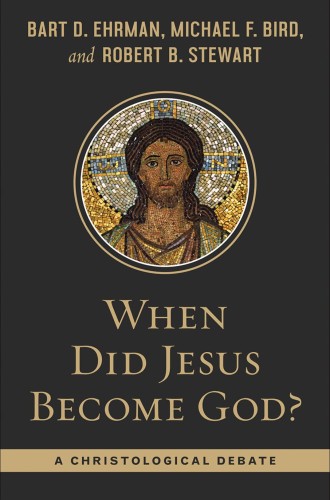Debating the nature of Jesus
A thoughtful book that includes a lively conversation between New Testament scholars Bart Ehrman and Michael Bird

When Did Jesus Become God?
A Christological Debate
In 2022, Ligonier Ministries conducted a survey called “The State of Theology” to explore how Americans respond to various theological questions. Among clergy whom I follow on social media, the results garnered dismay, frustration, confusion, and—if memory serves—a couple of facepalm and eye roll emoji combos. One statement to which respondents were asked to reply said, “Jesus was a great teacher, but he was not God.” Of the evangelical Christian respondents, 44 percent either somewhat or strongly agreed with the statement! Mainline Protestant numbers were not far from the US public generally: 49 percent agreed that Jesus was not God.
The US church has a Christology crisis on its hands. It will need more than a book to remedy it. Still, When Did Jesus Become God? affords clergy and laity alike a wonderful little resource for thinking more deeply and carefully about Jesus, the New Testament, and Christian tradition.
Robert Stewart opens the book with a wonderfully helpful primer on how to assess the arguments historians make. He begins with a list of “preliminary instructions” (such as “Judge a hypothesis from start to finish” and “An argument or a hypothesis is not evidence”) that are elementary yet essential for reading well. These instructions give way to several quick but useful summaries about essential parts of logical argumentation. He introduces readers to types of epistemic defeaters, forms of reasoning (including a very helpful section on abductive reasoning), and ways one might string together an argument.





